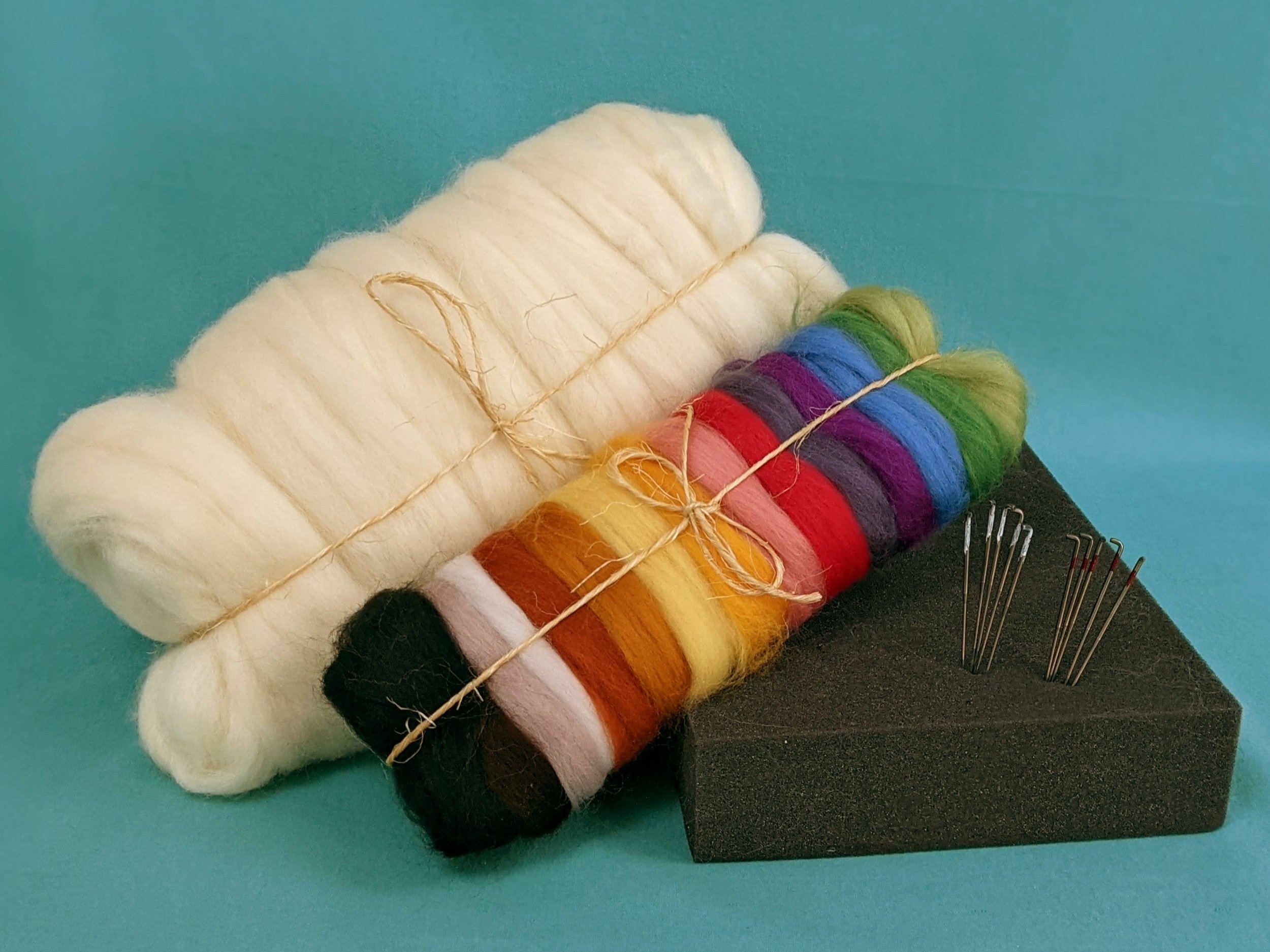Sculptural Needle Felting Kits: Materials, tools, and color to get you started
My online video-based masterclass is up and running, and getting good feedback from students. I refer to it as a ‘masterclass’ because it covers a LOT, including the materials and tools I prefer, and why. But it’s a remote learn-from-home class, so unlike my in-person workshops, I’m advising on tools and materials, not offering them. Until now.
In addition to making my recommendations and providing some sources, I’ve also taken some time to bulk order things and repackage them into manageable amounts for students. So you can order felting kits directly from my store that will get you started. Here’s what’s included:
1 pound (16 oz) of natural white Corriedale wool. I use this for nearly everything. When people ask me ‘What core wool do you use?,’ this is it. It has a long natural length of the fiber (or ‘staple) and its’ a little wavy, and more coarse than the more familiar Merino wool, which makes it great for building up mass.
1.5 oz of dyed Corriedale wool in 15 different colors. These small samples will be enough to add color over top of your creations, and if you need more you can get more through my source, GreatLakesFibers.
5 medium (38 gauge) felting needles, which I use for nearly everything. I’ve marked their tops in red paint so you can tell them apart from the
5 fine (40 gauge) felting needles, useful for tiny details, and marked on top with white paint.
and an 8 x 10 x 2 inch foam rubber work surface, which gives enough space (and two sides) to work on while protecting yourself and your table top.
The only thing missing as far as I’m concerned is a multi-needle tool— the handle that you can put felting needles into in order to use more than one— or just to make it easier on your hand. Pinching a single needle between your fingers and flexing your wrist to poke into wool a few thousand times is not great for your body. Using a needle holder— even just to hold one needle— changes the shape of your grip (the bigger the tool, the better for your grip) and tends to transfer some of the motion to your elbow and shoulder rather than just your wrist. You can watch a FREE section of my workshop all about tool use and choices on my YouTube Channel, here.
Happy Felting!
Assembling felting kits in my studio. Kits fit perfectly in US Post Office shipping boxes, a welcome bonus!


